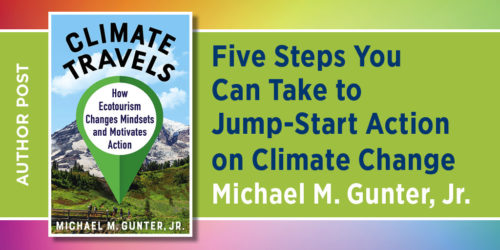Carl Hobbs: Earth Day and Mother's Day
April 22 was Earth Day, and in honor of the occasion, we have posted a series of articles over the course of this week by authors of our environmental studies titles. These articles cover a wide range of topics relevant to the study of the earth and the environment, from global climate change to the effects of economic development on the environment in China.
Today marks the end of our Earth Day 2012 blog series, and we are concluding with an article by Carl Hobbs, a professor of marine science at Virginia Institute of Marine Science at the College of William & Mary. Professor Hobbs is the author of The Beach Book: Science of the Shore.
Earth Day and Mother’s Day
Carl Hobbs
Earth Day and Mothers’ Day share at least one important characteristic: each is a one-day celebration of something we should honor throughout the year. We should not have to be reminded to acknowledge the Earth or our mothers (or our fathers); we should always be aware of what they do for us and we should thank them frequently. This is easy for me because as a geologist, I work with the Earth every day and think about what it is and why and how it changes. As a marine geologist with a career in the area of coastal geology and coastal geomorphology, I have the luxury of working where the land, the sea, and the atmosphere intersect. This has provided by with a wonderful view of the earth and with many opportunities to think about what I see. For me, every day is Earth Day.
Beaches, barrier islands, and salt marshes are beautiful and complex places. One of my goals is to get others to observe, to take really good looks at, their environments. Carefully looking at a beach and thinking about what is seen – Why does it have the shape it does? How and why has it changed since the last visit? Why is one side of a sand dune steeper than another? – teaches the observer a lot. I wrote The Beach Book to help people interpret the shore.
I have had the good fortune to work along the mid-Atlantic coast and Chesapeake Bay for over 40 years. There have been a lot of changes. At a rough estimate, sea level has risen 8 or 9 inches during that time; that is enough to see. Low areas that used to be inundated only once every few years now are submerged at least yearly. Acquaintances who live in the low areas near the water have lost their wells to salt-water intrusion or have lost septic systems the rise of the saturated zone. Just as the changing environment impacts society, society interacts with and changes the environment. Urban areas have expanded and rural areas have become suburban. Lowly beach cottages have been replaced by large and fancy dwellings. I’ve seen the economic benefit of commercial seaports and I’ve seen the number of working watermen and their catch fall.
Earth Day should be more than simply celebrating the Earth. We should think about our individual and societal interactions with our planet. It is impossible for us not to change it but we must work to eliminate as many detrimental changes as possible because we can’t back up and we have had almost no success in correcting mistakes. We cannot “restore” an estuary but we might be able to rehabilitate it.
Every day is Earth Day just as every day should be Mothers’ Day. April 22nd is a good day to share our thoughts and actions for the benefit of our Earth.




